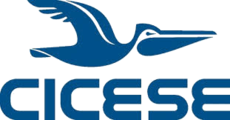Por favor, use este identificador para citar o enlazar este ítem:
http://cicese.repositorioinstitucional.mx/jspui/handle/1007/4348| Development and evaluation of hydrogels for the delivery of compounds with the potential to promote bone remodeling Desarrollo y evaluación de hidrogeles para la entrega de compuestos con el potencial de promover la remodelación ósea | |
| Tonatzin Zertuche Arias | |
| Ana Bertha Castro Ceseña Patricia Juárez Camacho | |
| Acceso Abierto | |
| Atribución | |
| Hidrogeles, regeneración ósea, N-acetilcisteína, péptido pro-adrenomedulina Hydrogels, bone remodeling, N-acetylcystein, pro-adrenomedullin peptide | |
| La regeneración ósea es un proceso complejo que coordina la regulación de la inflamación, la angiogénesis y la remodelación de la matriz extracelular. Aunque los autoinjertos siguen siendo el estándar de oro en la reparación ósea por su compatibilidad biológica y potencial osteogénico, presentan limitaciones como la morbilidad del sitio donador, disponibilidad restringida e integración variable. Alternativas como los aloinjertos y los dispositivos de fijación también conllevan desafíos clínicos, entre ellos el riesgo de rechazo inmunológico, fibrosis y reabsorción ósea. Para abordar estas limitaciones, los hidrogeles inyectables basados en polímeros naturales han emergido como alternativas mínimamente invasivas capaces de adaptarse a defectos irregulares y funcionar simultáneamente como andamios estructurales y sistemas de liberación. En esta tesis se diseñaron hidrogeles compuestos por gelatina y quitosano metacrilados, entrecruzados mediante fotopolimerización, para la entrega de N-acetilcisteína (NAC) y del péptido pro-adrenomedulina (PAMP). Se formularon cuatro variantes: una sin compuestos bioactivos (GC), y otras funcionalizadas con NAC (GCN), PAMP (GCP) o ambos (GCNP). Los materiales se caracterizaron mediante FTIR, SEM, ensayos mecánicos, de hinchamiento, degradación enzimática y celular, y perfil de liberación. Además, se evaluó su efecto sobre la viabilidad y mineralización de células preosteoblásticas MC3T3-E1, así como su comportamiento en cultivo ex vivo de calvaria. Mediante FTIR se confirmó la metacrilación de los polímeros y su interacción con NAC, lo que se demostró al observar por SEM el aumento significativo en el tamaño de poro al incorporar NAC, de 24.49 ± 14.19 µm (GC) a 200.49 ± 80.42 µm (GCN). GCNP presentó mayor hinchamiento y degradación acelerada: en presencia de lisozima, la pérdida de masa a 14 días fue de 97.53 ± 4.23 %, y en cocultivo con macrófagos RAW 264.7 durante 7 días alcanzó el 87.14 ± 4.29 %. El perfil de liberación mostró un comportamiento bifásico en GCNP, con un 86.60 ± 6.00 % liberado a los 7 días. En cuanto a propiedades mecánicas, GCN alcanzó la mayor resistencia a la compresión (151.79 ± 44.81 kPa), mientras que GCNP exhibió el módulo de Young más alto (55.26 ± 5.79 kPa). A nivel biológico, la viabilidad celular se evaluó mediante MTT (in vitro) y Live/Dead Kit (ex vivo), observándose que GCNP promovió un efecto sinérgico al incrementar la actividad metabólica de células MC3T3-E1 a los 1,3 y 7 días, así como... Bone regeneration in non-load-bearing defects involves highly coordinated processes, including Bone regeneration is a complex process that coordinates inflammation regulation, angiogenesis, and extracellular matrix remodeling. Although autografts remain the gold standard in bone repair due to their biological compatibility and osteogenic potential, they present limitations such as donor site morbidity, restricted availability, and variable integration. Alternatives such as allografts and fixation devices also pose clinical challenges, including risks of immune rejection, fibrosis, and bone resorption. To address these limitations, injectable hydrogels based on natural polymers have emerged as minimally invasive alternatives capable of adapting to irregular defects and functioning simultaneously as structural scaffolds and delivery systems. In this thesis, hydrogels composed of methacrylated gelatin and methacrylated chitosan were developed and crosslinked via photopolymerization to deliver N-acetylcysteine (NAC) and the pro-adrenomedullin peptide (PAMP). Four formulations were prepared: one without bioactive compounds (GC) and three functionalized with NAC (GCN), PAMP (GCP), or both (GCNP). The materials were characterized by FTIR, SEM, mechanical testing, swelling behavior, enzymatic and cellular degradation, and release profiles. Their effect on the viability and mineralization of MC3T3-E1 preosteoblastic cells was also evaluated, along with their behavior in an ex vivo calvarial culture model. FTIR confirmed the methacrylation of the polymers and their interaction with NAC, which was supported by SEM analysis showing a significant increase in pore size upon NAC incorporation, from 24.49 ± 14.19 µm (GC) to 200.49 ± 80.42 µm (GCN). GCNP exhibited enhanced swelling and accelerated degradation: in the presence of lysozyme, mass loss after 14 days reached 97.53 ± 4.23 %, and in coculture with RAW 264.7 macrophages for 7 days it reached 87.14 ± 4.29 %. The release profile of GCNP showed biphasic behavior, with 86.60 ± 6.00 % released by day 7. Regarding mechanical properties, GCN exhibited the highest compressive strength (151.79 ± 44.81 kPa), whereas GCNP had the highest Young’s modulus (55.26 ± 5.79 kPa). Biologically, cell viability was assessed using MTT (in vitro) and Live/Dead Kit (ex vivo). GCNP demonstrated a synergistic effect by enhancing the metabolic activity of MC3T3-E1 cells on days 1, 3, and 7, and by promoting cell proliferation in the ... | |
| CICESE | |
| 2025 | |
| Tesis de doctorado | |
| Inglés | |
| Zertuche Arias, T. 2025. Development and evaluation of hydrogels for the delivery of compounds with the potential to promote bone remodeling. Thesis of Doctor in Science. Centro de Investigación Científica y de Educación Superior de Ensenada, Baja California. 76 pp. | |
| ORGANOS ARTIFICIALES | |
| Aparece en las colecciones: | Tesis - Nanociencias |
Cargar archivos:
| Fichero | Descripción | Tamaño | Formato | |
|---|---|---|---|---|
| tesis_Tonatzin Zertuche Arias_2025.pdf | Descripción completa de la tesis | 4.44 MB | Adobe PDF | Visualizar/Abrir |
